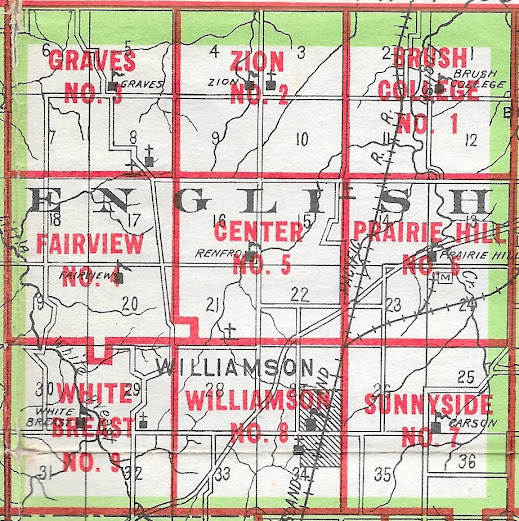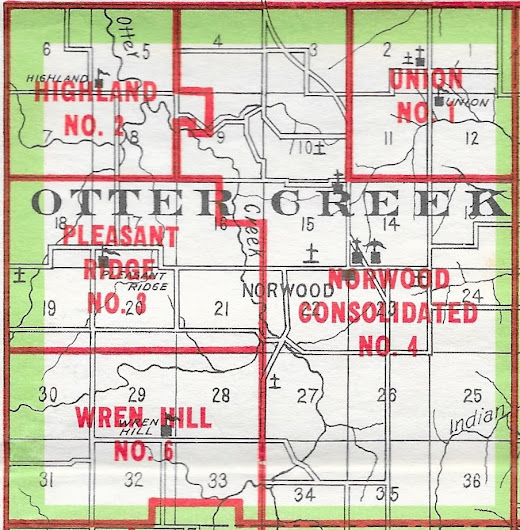Once upon a time, before population thinned and Chariton Community School emerged as Lucas County's sole provider of public education, the countryside was divided into dozens of districts, each with a name that in many cases identified a neighborhood, too.
The 1930 map at the top here shows how the county's townships are arranged.
The other maps, arranged alphabetically by township, are lifted from a 1947 school district map. I counted 88 rural school districts in addition to town districts in the 12 townships.
The red lines outline taxing districts. In some townships, there was only one levy --- shared by all of the school districts it contained. In other townships, the levy was separate for each district.
It gets a little confusing sometimes because these districts had multiple names. My mother grew up in English Township and attended Sunnyside No. 7, sometimes known as English No. 7, as her father and grandfather had done. But the schoolhouse also was called "Carson" now and then because the land on which it stood was part of the original Carson farm in that neighborhood east of Williamson.
My dad attended Myers School in Benton Township, so-called after his family. But the formal name of the district was Benton No. 4 (or Center No. 4) and there actually were two rural schools in the district. The other was Brush College.
As a point of interest, the only consolidated school district in the county during 1947 was Norwood, formed by combining three formerly independent districts.
The original plan had been that no student would have to walk (or ride) more than a mile in order to reach a school building.
The independent rural school districts were supervised by a county superintendent of schools, whose office was in Chariton.
Whenever a rural scholar was prepared --- usually by 1947 after completing eight grade levels --- a test was administered by the county superintendent to determine if graduation was in order.
As the years passed, country school graduation became a ceremonial event --- usually held in Chariton --- during which all graduates from rural schools across the county were recognized.
Most eighth-grade graduates attended high school after that, tuition provided by their rural districts, and most attended the high school nearest their homes --- at varying times during the 20th century Chariton, Russell, Williamson, Derby, Lucas and Norwood.
But that was not mandatory. My maternal grandparents, for example, dispatched all of their children except one --- Uncle Owen --- to Chariton because it was larger and offered more options. Logically, they all would have attended Williamson, but only Owen did.
Only Chariton offered a "normal school" --- teacher training --- program, so scholars from across the county and in some instances from adjoining counties, too, enrolled there if they wanted to teach.














No comments:
Post a Comment